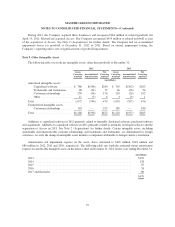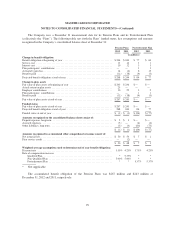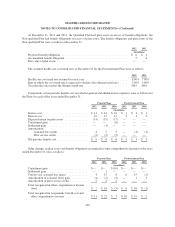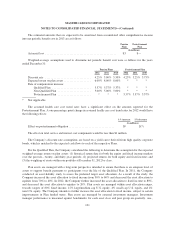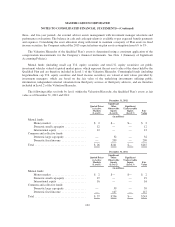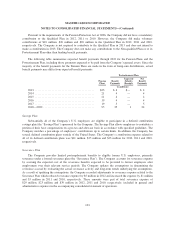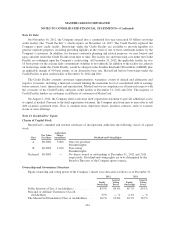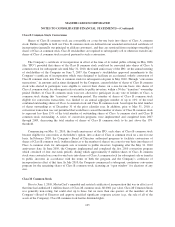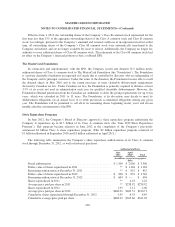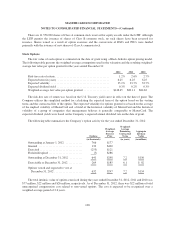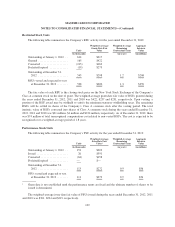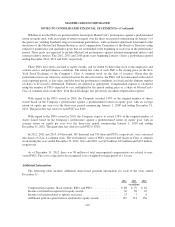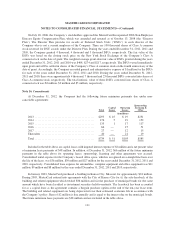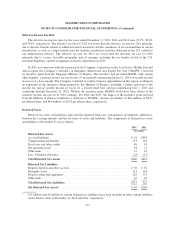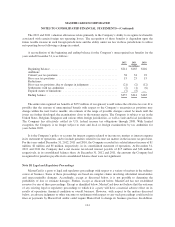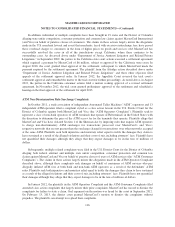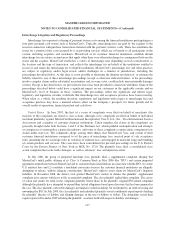MasterCard 2012 Annual Report Download - page 111
Download and view the complete annual report
Please find page 111 of the 2012 MasterCard annual report below. You can navigate through the pages in the report by either clicking on the pages listed below, or by using the keyword search tool below to find specific information within the annual report.
MASTERCARD INCORPORATED
NOTES TO CONSOLIDATED FINANCIAL STATEMENTS—(Continued)
** Not applicable
1The initial authorization in September 2010 for $1 billion was amended in April 2011 to increase the
authorization to $2 billion.
As of January 25, 2013, the cumulative repurchases by the Company under the June 2012 Share Repurchase
Program totaled approximately 2.3 million shares of its Class A common stock for an aggregate cost of
approximately $1.1 billion at an average price of $467.44 per share of Class A common stock.
On February 5, 2013, the Company’s Board of Directors approved a new share repurchase program
authorizing the Company to repurchase up to $2 billion of its Class A common stock. The new share repurchase
program will become effective at the completion of the Company’s June 2012 Share Repurchase Program.
Note 14. Accumulated Other Comprehensive Income (Loss)
The changes in the balances of each component of accumulated other comprehensive income (loss) for the
years ended December 31, 2012 and 2011 were as follows:
Foreign
Currency
Translation
Adjustments
Defined
Benefit
Pension and
Other
Postretirement
Plans, Net of
Tax
Investment
Securities
Available-
for-Sale,
Net of Tax
Accumulated
Other
Comprehensive
Income (Loss)
(in millions)
Balance at December 31, 2010 ............. $105 $(12) $ 2 $ 95
Current period other comprehensive loss ..... (75) (20) (2) (97)
Balance at December 31, 2011 ............. 30 (32) — (2)
Current period other comprehensive income
(loss) ............................... 63 (5) 5 63
Balance at December 31, 2012 ............. $ 93 $(37) $ 5 $ 61
Note 15. Share Based Payment and Other Benefits
In May 2006, the Company implemented the MasterCard Incorporated 2006 Long-Term Incentive Plan,
which was amended and restated as of October 13, 2008 (the “LTIP”). The LTIP is a shareholder-approved
omnibus plan that permits the grant of various types of equity awards to employees.
The Company has granted non-qualified stock options (“options”), restricted stock units (“RSUs”) and
performance stock units (“PSUs”) under the LTIP. The options, which expire ten years from the date of grant,
generally vest ratably over four years from the date of grant. The RSUs vest after three to four years. The PSUs
vest after three years. The Company uses the straight-line method of attribution for expensing equity awards.
Compensation expense is recorded net of estimated forfeitures. Estimates are adjusted as appropriate.
Upon termination of employment, a participant’s unvested awards are forfeited. However, when a participant
terminates employment due to disability or retirement more than six months after receiving the award, the
participant retains all of their awards without providing additional service to the Company. Retirement eligibility is
dependent upon age and years of service, as follows: age 55 with ten years of service, age 60 with five years of
service and age 65 with two years of service. Compensation expense is recognized over the shorter of the vesting
periods stated in the LTIP or the date the individual becomes eligible to retire but not less than six months.
107


